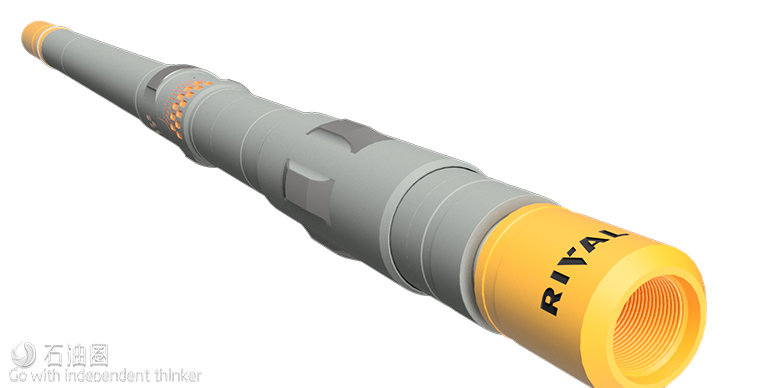Rival Downhole Tools has secured a five-year collaborative supply agreement for drilling motors for U.S. land from a major oilfield services provider. Rival will utilize its engineering and operational capabilities to support the customer’s substantial and growing directional drilling business. Rival will also accelerate the growth of its operational footprint into multiple basins to optimize its proximity to drilling activity.
Rival Downhole Tools recently transformed itself into a provider of innovative and highly-reliable downhole drilling motors, proprietary friction reduction tools, and engineering services. With the securing of this long-term agreement, Rival now manages one of the largest active drilling motor fleets in North America.
“The domestic motor market is exceedingly competitive and extremely transactional. This type of long-term commitment speaks to the value of the team we’ve built and the quality of our products and services,” says Neil Fletcher, CEO, Rival. “The growth trajectory and stability this agreement affords Rival for years ahead is unprecedented. It will enable us to deliver significant value to all of our customers in U.S. land.”
The Rival Performance Drilling Motor (Rival PDM) is the most advanced line to date of Ashmin patented mud lube bearing technology. The Rival PDM is designed to exceed downhole performance and reliability requirements in all applications. We’ve partnered with the industry leading powersection manufacturers to ensure our customers can count on their Rival PDM. We continuously advance our motor platform into thru tubing applications with the Rival PDMct and incorporate percussion drilling with the Rival Hammer Drill Motor (Rival HDM and HDMct).
Key Features:
- PDMct sizes of 2.88″, 3.13″ and PDM sizes of 5.12″, 7.12″ and 8.5″
- HDMct sizes of 2.88″, 3.13″ and HDM sizes of 7″ and 8.5″
- Expanded ID of PDM housings to incorporate higher torque transmissions
- Adjustable-bend PDM build rates typical of industry’s fixed-bend motor offering
- Conventional, hard rubber & EvenTek® powersections
Customer Benefits:
- Improved performance and ROP via higher performance motor platform
- Increased reliability via “no trip” design and maintenance philosophy
- Support from industry leading Ashmin Engineering
Motor Components:Top Sub & Rotor Catch
At the top end of the motor is the top sub, which is a crossover housing between the power section and the rest of the BHA. Most top subs accommodate API float valves. The top sub also provides a seat for the rotor catch system.
The rotor catch is a retaining device which minimizes the possibility of losing motor components downhole in the unlikely event that an external connection breaks or backs-off. The rotor catch is attached to the top of the rotor by a threaded connection.
Power Section
The power section is a positive displacement motor comprised of a rotor and a stator. The rotor is a long, spiral shaft with a number of external, curved lobes. The stator has a similar spiral profile formed internally by the stator elastomer, but is designed to have one more lobe than the rotor.
The design results in a cavity for fluid to flow into. As pressure increases, the cavity progresses down the rotor by forcing the rotor to rotate and progress around the spiral profile. This action converters hydraulic horsepower into mechanical horsepower delivered to the drill bit.
The desired lobe configuration will vary depended on the application. In general, a power section with fewer lobes generates a lower torque and higher speed, and a power section with more lobes generates a higher torque and lower speed.
Since the power section is a positive displacement motor, speed and torque are determined independently from each other during operation.
The rotational speed is proportional to the fluid flow rate through the power section. The higher the flow rate, the higher the output speed.
The torque generated is proportional to the differential pressure across the power section. Differential pressure is created by applying a load to the bit, thus the more weight applied to the bit, the higher the differential pressure across the power section.
For each power section configuration, there is a limit to how much differential pressure the power section can handle. If the differential pressure increases beyond the elastomer limitations, the power section will no longer keep the fluid cavities travelling down the rotor separate from each other causing the rotor, and thus the bit, to stop rotating. This is commonly known as a stalled motor and can cause damage to the stator elastomer, motor, and other BHA components.
Stabilizers
Stabilizers are available as removable or integral stabilizers. The removable stabilizers are threaded on to the bearing housing, whereas the integral stabilizers are directly integrated in the bearing housing.
A stabilizer can assist in maintaining a particular hole angle, and increase the yield of the motor with regards to angle change. Calculated build rates for stabilized motors are based on stabilizers that are 1/8” smaller than the hole size.

 石油圈
石油圈
